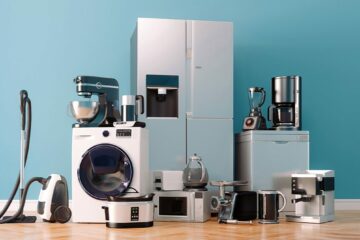Most people associate PAT testing with workplaces because the Electricity at Work Regulations 1989 (EAWR) are often cited as the main driver. But just because a setting isn’t a traditional workplace doesn’t mean PAT testing has no role. Landlords, care home operators, hoteliers and HMO managers all have legal duties to provide safe electrical equipment. PAT testing is one of the simplest, most recognised ways to demonstrate compliance across these contexts. This article explains how those duties arise and why PAT can still be the sensible way to “tick the box.”
Holiday Lets & Short-Term Rentals
Even if you let a property for a weekend, you still owe a duty to provide safe appliances.
- Defective Premises Act 1972 (DPA) places a duty to ensure dwellings are reasonably safe for occupiers.
- Holiday cottages, serviced apartments and similar short-term lets are generally treated as dwellings for this purpose.
- PAT testing is a practical way to show you’ve taken reasonable steps to keep portable appliances safe.
Rental Properties & HMOs
In private rentals and Houses in Multiple Occupation (HMOs), duties are clear and enforceable.
- Landlord and Tenant Act 1985 requires installations for the supply of electricity to be kept in repair and proper working order.
- Housing Act 2004 and the Housing Health and Safety Rating System (HHSRS) require properties to be free from electrical hazards; local authorities can enforce.
- General Product Safety Regulations 2005 apply where landlords supply appliances as “goods.”
- For HMOs, local licensing conditions often expect up-to-date PAT records for landlord-supplied appliances.
There’s no blanket statute saying “you must PAT test,” but PAT is the accepted method to evidence that supplied appliances are safe and maintained.
Care Homes
Care homes have overlapping duties because residents live there and staff work there.
- Residents: Duties under the Defective Premises Act 1972 and care-sector standards (e.g., CQC expectations in England).
- Staff: The Health and Safety at Work etc. Act 1974 (HSWA) and the Electricity at Work Regulations 1989 apply to the workplace.
Given the vulnerability of residents and the workplace context for staff, regular PAT testing is strongly expected as part of compliance.
Hotels & Hotel Rooms
A hotel room is not generally treated as a “dwelling” under the DPA, but other laws still apply.
- HSWA 1974 applies because hotels are businesses with duties to protect employees and others.
- Occupiers’ Liability Acts 1957 & 1984 require operators to keep visitors reasonably safe.
If a guest is injured by a faulty kettle, lamp or hairdryer, the operator could be liable. Regular PAT testing is a clear way to evidence safety checks and maintenance.
So, Do You Have to PAT Test?
No UK law says, in every case, “you must PAT test.” What the law does require is that supplied electrical equipment is safe and maintained. PAT testing is the widely recognised, auditable method to demonstrate that duty has been met—whether you’re a landlord, HMO licence holder, care-home operator or hotelier.
Who Needs PAT Testing and Why? (At-a-Glance)
| Setting | Applicable Law | Who Is Protected | Why PAT Testing Is Relevant |
|---|---|---|---|
| Workplaces | Electricity at Work Regulations 1989 (EAWR) | Employees & others at work | EAWR requires systems to be maintained safely; PAT is the standard way to evidence this for portable appliances. |
| Private Rentals (PRS) | Landlord & Tenant Act 1985; Housing Act 2004 (HHSRS); GPSR 2005 | Tenants | Landlords must supply safe appliances; PAT provides audit evidence if challenged by tenants or enforcement. |
| HMOs | Housing Act 2004 (HHSRS); Local HMO licensing conditions | Multiple tenants | Licensing schemes commonly expect PAT records; PAT demonstrates proactive compliance and hazard control. |
| Holiday Lets / Short-Term Lets | Defective Premises Act 1972 | Guests/occupiers | Short-term dwellings still require safe supplied appliances; PAT shows reasonable steps were taken. |
| Care Homes | DPA 1972; HSWA 1974; EAWR 1989; sector standards (e.g., CQC) | Residents & staff | Dual duty: protect vulnerable residents and employees. PAT is regulator-expected evidence of control. |
| Hotels | HSWA 1974; Occupiers’ Liability Acts 1957/1984 | Guests & staff | Operators must keep visitors safe; PAT demonstrates appliance safety checks and maintenance. |
Note: This article provides general information, not legal advice. Always check current legislation, guidance and local licensing conditions for your situation.


0 Comments